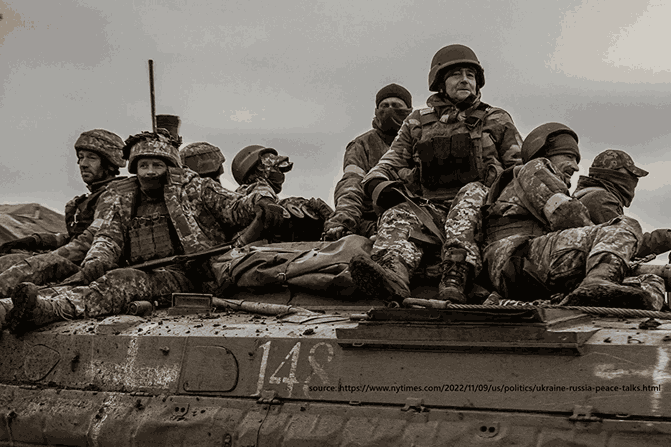Ukraine War: Peace Talks Under Strain as Tensions Escalate
Introduction
The war in Ukraine, now stretching deep into its fourth year since Russia’s full-scale invasion of February 2022, remains one of the most consequential and destabilizing conflicts in modern history. Hopes for a ceasefire or a lasting peace have repeatedly surfaced, only to collapse under the weight of political mistrust, competing national interests, and shifting global power dynamics.
In recent days, the fragile prospect of renewed peace talks has once again entered the global conversation. Yet instead of easing the conflict, developments have further intensified tensions. Russian President Vladimir Putin has openly declared that any deployment of Western peacekeeping forces in Ukraine would render them “legitimate targets,” a threat that starkly underscores the precarious balance of the current situation. Meanwhile, the United States and European Union are considering fresh rounds of sanctions against Moscow, while India has called for constructive dialogue to end the war.
This article explores the state of peace talks and the rising tensions surrounding them, analyzing the diplomatic maneuvers, military risks, and broader geopolitical stakes shaping the path ahead.
The Latest Flashpoint: Putin’s Warning
At the heart of the most recent escalation is Vladimir Putin’s blunt statement that any Western troops deployed to Ukraine would be regarded as valid military targets for Russian forces. His words, made in response to growing discussions in European capitals about the possibility of sending multinational forces under the guise of peacekeepers, sent shockwaves across diplomatic circles.
The Kremlin’s framing is consistent with its longstanding narrative: that NATO and the West are not neutral actors but direct participants in the war. By labeling peacekeepers as combatants, Russia draws a hard red line, effectively daring Western governments to test its resolve.
For Ukraine, which continues to endure missile barrages, drone attacks, and grinding ground warfare across its eastern regions, the prospect of an international peacekeeping force could provide vital relief. For Russia, however, it represents an intolerable infringement on its claimed sphere of influence and its military campaign.
Western Sanctions and Security Consultations
Parallel to Moscow’s threats, the United States and the European Union are intensifying their discussions on additional sanctions against Russia. The sanctions already imposed targeting banks, technology transfers, energy exports, and oligarchs have significantly damaged the Russian economy. However, Russia has shown resilience, leveraging alternative markets in Asia and deepening its ties with China, India, and other non-Western economies.
The new measures reportedly under consideration include restrictions on Russian access to global financial networks, tighter controls on energy trading, and measures to choke off imports of high-tech components used in weapons production. In addition, Washington and Brussels are openly debating whether to coordinate the deployment of a peacekeeping or stabilization mission, though opinions among European countries are divided.
While nations like Poland and the Baltic states have been vocal in their support for stronger deterrence measures, others such as Germany and France are more cautious, wary of actions that could trigger direct confrontation with Moscow.
India’s Call for Dialogue
Amid the bellicose rhetoric and economic maneuvering, India has once again positioned itself as a voice for peace. The Indian Ministry of External Affairs emphasized that it supports “an early end of the conflict” and called for “constructive dialogue among all parties.”
India’s stance reflects its balancing act: maintaining a strategic partnership with Russia, a major defense supplier, while also strengthening ties with the United States and Europe. This unique position allows New Delhi to act as a potential mediator, though its influence remains limited by the hardline stances of both Kyiv and Moscow.
European leaders have increasingly looked to India, as well as other middle powers like Brazil and South Africa, to help open channels of communication. Yet whether these countries can meaningfully influence the trajectory of the war remains uncertain.
Why Peace Talks Keep Stalling
The latest developments reveal a deeper truth: peace talks between Russia and Ukraine are trapped in a cycle of hope and disappointment. Several structural obstacles stand in the way:
1 Territorial Disputes
Russia continues to insist on recognition of its annexation of Crimea (2014) and the occupied territories of Donetsk, Luhansk, Zaporizhzhia, and Kherson. Ukraine, on the other hand, refuses to surrender sovereignty over any of its land. This irreconcilable clash makes meaningful compromise difficult.
2 Trust Deficit
Years of broken agreements, from the Minsk accords to various ceasefire attempts, have eroded trust. Ukraine views Russia’s promises as unreliable, while Russia accuses Kyiv of acting as a proxy for Western interests.
3 Domestic Politics
Both Zelenskyy and Putin face domestic political pressures that make concessions risky. For Zelenskyy, any territorial compromise could be seen as betrayal. For Putin, scaling back military objectives could undermine his narrative of strength and inevitability.
4 External Influences
NATO, the EU, China, India, and others all have stakes in the conflict, and their differing agendas complicate direct bilateral negotiations.
Rising Tensions: The Military Dimension
Even as diplomats trade statements, the war on the ground remains relentless. Russian missile and drone strikes continue to target Ukrainian infrastructure, while Ukrainian forces press on with counteroffensive operations in contested regions.
The potential deployment of Western troops, whether as peacekeepers or advisors, could dangerously blur the line between indirect support and direct military involvement. For Moscow, this would be tantamount to NATO boots on the ground, escalating the conflict to a confrontation between nuclear-armed powers.
Ukraine, however, views stronger Western involvement as necessary to offset Russia’s advantages in manpower and artillery. The balancing act between supporting Ukraine and avoiding escalation remains one of the thorniest dilemmas for Western policymakers.
Global Power Shifts and the Ukraine War
The peace talks also serve as a prism through which broader global shifts can be observed.
- China: Beijing has cautiously supported Moscow, providing economic lifelines while calling for dialogue. Its role underscores the growing alignment between authoritarian powers challenging Western dominance.
- Europe: The war has reshaped Europe’s security architecture, revitalizing NATO and forcing the EU to rethink its defense and energy policies.
- The U.S.: Washington remains Kyiv’s most important backer, but domestic debates over aid to Ukraine continue to shape policy.
- The Global South: Countries in Africa, Latin America, and Asia are caught between economic fallout from the war and diplomatic pressure to take sides, leading many to adopt positions of neutrality.
The Ukraine conflict is no longer just a regional war; it is a global fault line reshaping alliances, economies, and ideologies.
The Human Cost of Stalled Peace
Beyond geopolitics and grand strategy, the prolonged failure of peace talks has devastating human consequences. Millions of Ukrainians remain displaced. Cities across the east lie in ruins. Civilian casualties continue to mount, and basic infrastructure from hospitals to power plants has been repeatedly destroyed.
The psychological toll is equally severe, with generations growing up under the shadow of war. For ordinary Ukrainians, the endless cycle of failed negotiations represents not just a diplomatic impasse, but a daily struggle for survival.
Possible Paths Forward
Though the situation is grim, several potential scenarios could emerge in the coming months:
1 Escalation and Confrontation
If Western troops are indeed deployed and Russia acts on its threats, the war could escalate dramatically, risking a direct Russia-NATO clash.
2 Prolonged Stalemate
The conflict could drag on without decisive victories, with both sides locked in attrition warfare. Peace talks would remain symbolic, producing little progress.
3 Negotiated Settlement
Though unlikely in the near term, international mediation, possibly involving India, China, or the UN, could eventually produce a ceasefire framework.
4 Frozen Conflict
Similar to other post-Soviet wars, the fighting could decrease without resolution, leaving Ukraine partially occupied and Russia entrenched.
Conclusion
The current state of the Ukraine war illustrates how fragile and volatile the path to peace has become. Putin’s threats, Western sanctions, and India’s calls for dialogue all highlight the multiplicity of voices shaping the conversation. Yet, beneath the diplomatic exchanges lies the stark reality: both Russia and Ukraine remain unwilling to compromise on core issues of sovereignty and security.
Until those fundamental divides are bridged, peace talks are likely to remain more about rhetoric than resolution. And as long as they stall, the war will continue exacting its toll on soldiers, civilians, economies, and the international order itself.
The world watches as the stakes grow higher, with the hope that dialogue can one day replace the drumbeat of war. But for now, peace in Ukraine remains as elusive as ever.




